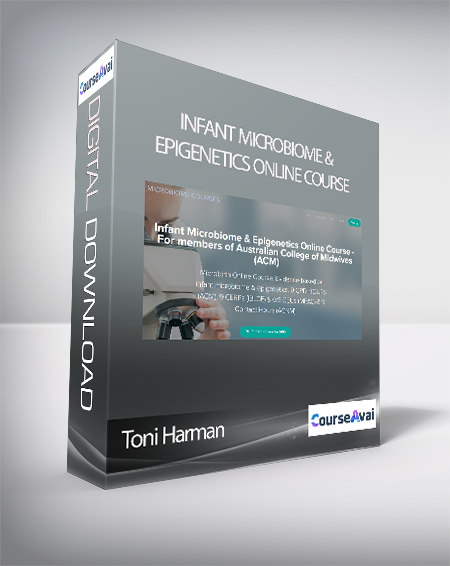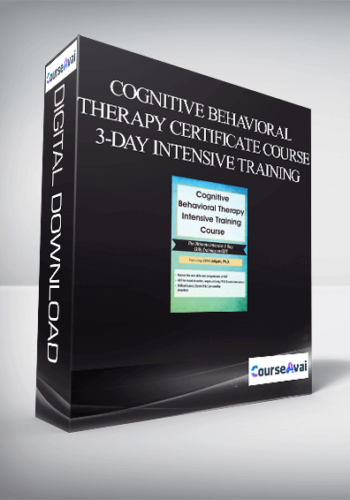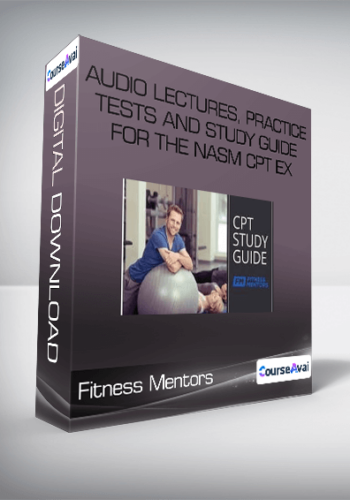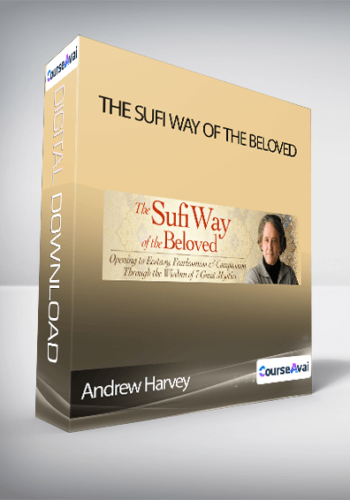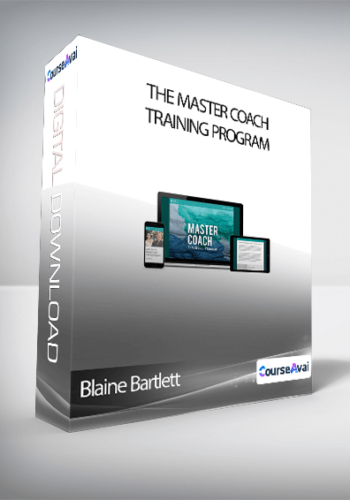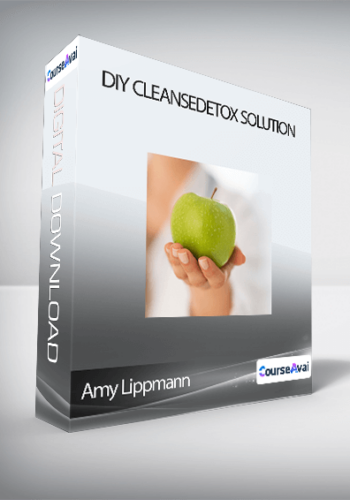Toni Harman – Infant Microbiome & Epigenetics Online Course – For members of Australian College of Midwives (ACM)
Original price was: $105.00.$31.50Current price is: $31.50.
Microbirth Online Course. Evidence-based on infant microbiome & epigenetics. 9 CPD HOURS (ACM), 9 CERPs (IBLCE) & 0.9 CEUs (MEAC) & 9 Contact Hours (ACNM)
Description
Unlock your potential with the Unlock your potential with the Toni Harman – Infant Microbiome & Epigenetics Online Course – For members of Australian College of Midwives (ACM)Toni Harman – Infant Microbiome & Epigenetics Online Course – For members of Australian College of Midwives (ACM) course for only course for only Original price was: $105.00.Original price was: $105.00.$$31.5031.50Current price is: $31.50.Current price is: $31.50. at at Giolib.comGiolib.com! Explore our comprehensive library of over 60,000 downloadable digital courses across various ! Explore our comprehensive library of over 60,000 downloadable digital courses across various Medical & HealthMedical & Health. Get expert-led, self-paced learning at up to 80% savings. Elevate your skills today!. Get expert-led, self-paced learning at up to 80% savings. Elevate your skills today!

Toni Harman – Infant Microbiome & Epigenetics Online Course – For members of Australian College of Midwives (ACM)
Infant Microbiome & Epigenetics Online Course – For members of Australian College of Midwives (ACM) Infant Microbiome & Epigenetics Online Course – For members of Australian College of Midwives (ACM)
Microbirth Online Course. Evidence-based on infant microbiome & epigenetics. 9 CPD HOURS (ACM), 9 CERPs (IBLCE) & 0.9 CEUs (MEAC) & 9 Contact Hours (ACNM) Microbirth Online Course. Evidence-based on infant microbiome & epigenetics. 9 CPD HOURS (ACM), 9 CERPs (IBLCE) & 0.9 CEUs (MEAC) & 9 Contact Hours (ACNM)
THIS COURSE IS FOR MEMBERS OF:THIS COURSE IS FOR MEMBERS OF:
AUSTRALIAN COLLEGE OF MIDWIVESAUSTRALIAN COLLEGE OF MIDWIVES
THE INFANT MICROBIOME & EPIGENETICSTHE INFANT MICROBIOME & EPIGENETICS
(MICROBIRTH ONLINE COURSE 9 x 60 MINS)(MICROBIRTH ONLINE COURSE 9 x 60 MINS)
For Australian College of MidwivesFor Australian College of Midwives
Helping Helping YOUYOU feel more confident about the infant microbiome. feel more confident about the infant microbiome.
Helping Helping YOUYOU support parents with full informed choice. support parents with full informed choice.
Helping Helping YOUYOU understand the science that strongly supports: understand the science that strongly supports:
– vaginal birth– vaginal birth
– immediate skin-to-skin contact– immediate skin-to-skin contact
– exclusive breastfeeding– exclusive breastfeeding
For the optimal development of the infant immune system for best possible lifelong healthFor the optimal development of the infant immune system for best possible lifelong health
Evidence-based with up-to-date referencesEvidence-based with up-to-date references
Easy-to-understand & easy-to-digestEasy-to-understand & easy-to-digest
Go-at-your-own pace online learning so you can take days, months or up to 3 years to complete!Go-at-your-own pace online learning so you can take days, months or up to 3 years to complete!
Learn from 11 leading professors and 2 lactation expertsLearn from 11 leading professors and 2 lactation experts
Approved for 9 CPD HOURS / CE credits & 9 CERPS (4L & 5R) # 320017K Approved for 9 CPD HOURS / CE credits & 9 CERPS (4L & 5R) # 320017K
Downloadable handouts & Certificate of CompletionDownloadable handouts & Certificate of Completion
Covers the developing infant microbiome and epigenetics during conception, pregnancy, vaginal birth, C-section, breastfeeding & formula feeding Covers the developing infant microbiome and epigenetics during conception, pregnancy, vaginal birth, C-section, breastfeeding & formula feeding
Course FeaturesCourse Features
The course content is divided into 9 sesions of 60 mins.The course content is divided into 9 sesions of 60 mins.
Each session is split into bite-sized 5-10 minute lessons featuring:Each session is split into bite-sized 5-10 minute lessons featuring:
- PDF presentationsPDF presentations
- high-quality short videos featuring 11 world-leading professorshigh-quality short videos featuring 11 world-leading professors
- online graded testsonline graded tests
- downloadable study handouts including scientific referencesdownloadable study handouts including scientific references
- student evaluationsstudent evaluations
- moderated discussion forumsmoderated discussion forums
Lifetime access means you can go at your own pace, and return to the course content again and again. Lifetime access means you can go at your own pace, and return to the course content again and again.
The course content will be regularly updated ensuring you are kept up-to-date with the very latest research! The course content will be regularly updated ensuring you are kept up-to-date with the very latest research!
On completion of the whole course, a print-ready Certificate of Completion is available to download for continuing education credits.On completion of the whole course, a print-ready Certificate of Completion is available to download for continuing education credits.
Course ContentsCourse Contents
The 9 x 60 mins sessions are:The 9 x 60 mins sessions are:
- Introduction to the microbiomeIntroduction to the microbiome
- Microbiome and pregnancyMicrobiome and pregnancy
- Microbiome and vaginal birthMicrobiome and vaginal birth
- Microbiome and C-sectionMicrobiome and C-section
- Microbiome and breastfeedingMicrobiome and breastfeeding
- Epigenetics and pregnancyEpigenetics and pregnancy
- Epigenetics and vaginal birthEpigenetics and vaginal birth
- Epigenetics and breastfeedingEpigenetics and breastfeeding
- Science of oxytocinScience of oxytocin
Key BenefitsKey Benefits
* Learn the science from 11 world-leading professors & 2 lactation experts* Learn the science from 11 world-leading professors & 2 lactation experts
* You will feel much more confident when asked questions by parents.* You will feel much more confident when asked questions by parents.
* You will be up to date with the latest evidence-based research.* You will be up to date with the latest evidence-based research.
* You will understand the role of the infant microbiome and epigenetics during pregnancy, birth, breastfeeding and early infancy. * You will understand the role of the infant microbiome and epigenetics during pregnancy, birth, breastfeeding and early infancy.
* You will be in a better position to empower parents with full informed choice.* You will be in a better position to empower parents with full informed choice.
Approved for 9 Continuing Education credits:Approved for 9 Continuing Education credits:
If you are a midwife (LM, CPM, CM, CNM), lactation consultant, nurse, doula, childbirth educator, breastfeeding professional or other health professional, the following CE credits are accepted by many midwifery, nursing, doula, childbirth education orgnanizations including: IBLCE, AMCB for CMP, ACM, CCI, ICEA, DONA International, CAPPA and as CE Credits by Lamaze Certified Childbirth Educators. If you are a midwife (LM, CPM, CM, CNM), lactation consultant, nurse, doula, childbirth educator, breastfeeding professional or other health professional, the following CE credits are accepted by many midwifery, nursing, doula, childbirth education orgnanizations including: IBLCE, AMCB for CMP, ACM, CCI, ICEA, DONA International, CAPPA and as CE Credits by Lamaze Certified Childbirth Educators.
- 9 CPD HOURS – Australian College of Midwives (ACM)9 CPD HOURS – Australian College of Midwives (ACM)
- 9 CONTACT HOURS – American College of Nurse-Midwives (ACNM) #2019/0129 CONTACT HOURS – American College of Nurse-Midwives (ACNM) #2019/012
- 9 HOURS / 0.9 CEUs – Midwifery Educational Accreditation Council (MEAC) Program No #M1819-62-0621DE9 HOURS / 0.9 CEUs – Midwifery Educational Accreditation Council (MEAC) Program No #M1819-62-0621DE
- 9 CERPs (4 L-CERPs & 5 R-CERPs9 CERPs (4 L-CERPs & 5 R-CERPs) ) – International Board of Lactation Consultant Examiners (IBLCE)– International Board of Lactation Consultant Examiners (IBLCE) CERPS Registry No. 320017KCERPS Registry No. 320017K
- 9.0 LAMAZE CONTACT HOURS9.0 LAMAZE CONTACT HOURS – Lamaze International LIN 18-20. These hours may be applied towards recertification as an LCCE educator under the learning competencies 1, 3, 5 and 6. – Lamaze International LIN 18-20. These hours may be applied towards recertification as an LCCE educator under the learning competencies 1, 3, 5 and 6.
- 9.0 CONTACT HOURS – accepted by International Childbirth Education Association (ICEA)9.0 CONTACT HOURS – accepted by International Childbirth Education Association (ICEA) LIN 18-20 LIN 18-20
- 9 HOURS of continuing education approved by the Midwifery Council (for midwives of New Zealand). This course has been approved as continuing midwifery education by the Midwifery Council (New Zealand) for 9 hours. Alto Films Ltd Approval Number: 2018CME038E 9 HOURS of continuing education approved by the Midwifery Council (for midwives of New Zealand). This course has been approved as continuing midwifery education by the Midwifery Council (New Zealand) for 9 hours. Alto Films Ltd Approval Number: 2018CME038E
- This course can be used as 9 HOURS CPD for revalidation by the Nursing and Midwifery Council (NMC)This course can be used as 9 HOURS CPD for revalidation by the Nursing and Midwifery Council (NMC)
- The 9 CONTACT HOURS approved by Lamaze International are accepted as 9 Contact Hours by CAPPA, DONA International and other doula / childbirth education organisations (please check with your own organisation). The 9 CONTACT HOURS approved by Lamaze International are accepted as 9 Contact Hours by CAPPA, DONA International and other doula / childbirth education organisations (please check with your own organisation).
- American College of Nurse-Midwives (ACNM) is an approved provider of nursing CNEs. This means 9 Contact Hours approved by ACNM can be used as 9 nursing CNEs, but please check with your state board / provider. American College of Nurse-Midwives (ACNM) is an approved provider of nursing CNEs. This means 9 Contact Hours approved by ACNM can be used as 9 nursing CNEs, but please check with your state board / provider.
- Approved for 9 HOURS / 0.9 Midwifery CEU credits by the Midwifery Education & Accreditation Council ( Program No #M1819-62-0621DE). These 9 HOURS / 0.9 Midwifery CEUs are applicable for Certified Professional Midwives recertifying through the North American Registry of Midwives (NARM). Approved for 9 HOURS / 0.9 Midwifery CEU credits by the Midwifery Education & Accreditation Council ( Program No #M1819-62-0621DE). These 9 HOURS / 0.9 Midwifery CEUs are applicable for Certified Professional Midwives recertifying through the North American Registry of Midwives (NARM).
- Accepted as 5 HOURS for CLC recertification purposes by the Academy of Lactation Policy and Practice (ALPP).Accepted as 5 HOURS for CLC recertification purposes by the Academy of Lactation Policy and Practice (ALPP).
How do Continuing Education credits apply to you?How do Continuing Education credits apply to you?
– This course is an Australian College of Midwives CPD Recognised Activity and has been approved for 9 CPD Hours.– This course is an Australian College of Midwives CPD Recognised Activity and has been approved for 9 CPD Hours.
– Australian Midwives and Nurses are required to collect 20 hours of Continuing Professional Development (CPD) each year, so this course will provide 9 CPD Hours out of those 20 CPD Hours. If required for auditing, the course certificate will provide date and number of CPD Hours. If required for auditing, a brief description of objectives are listed at the start of each course session.– Australian Midwives and Nurses are required to collect 20 hours of Continuing Professional Development (CPD) each year, so this course will provide 9 CPD Hours out of those 20 CPD Hours. If required for auditing, the course certificate will provide date and number of CPD Hours. If required for auditing, a brief description of objectives are listed at the start of each course session.
– 9 Contact Hours (ACNM) are applicable to Nurse-Midwives, Certified Midwives, Registered Nurses, doulas and childbirth education providers.– 9 Contact Hours (ACNM) are applicable to Nurse-Midwives, Certified Midwives, Registered Nurses, doulas and childbirth education providers.
– ACNM is an approved provider of nursing CNEs, so 9 Contact Hours approved by ACNM are accepted as Contact Hours by many state boards for nursing CNEs (please check with your own state board/provider)– ACNM is an approved provider of nursing CNEs, so 9 Contact Hours approved by ACNM are accepted as Contact Hours by many state boards for nursing CNEs (please check with your own state board/provider)
– 9 Contact Hours (ACNM) are accepted by the Competency and Credentialing Institute (CCI) for CNOR recertification and CRNFA recertification.– 9 Contact Hours (ACNM) are accepted by the Competency and Credentialing Institute (CCI) for CNOR recertification and CRNFA recertification.
– 9 Contact Hours (ACNM) are accepted as part of Certificate Maintenance Program (CMP) by the American Midwifery Certification Board (AMCB). The AMCB operates on a 5-year certification cycle. That means that if you initially pass in 2017, you will have five years until 2022 to fulfil the certification cycle requirements, which includes completion of 20 Contact Hours (2.0 CEUs)– 9 Contact Hours (ACNM) are accepted as part of Certificate Maintenance Program (CMP) by the American Midwifery Certification Board (AMCB). The AMCB operates on a 5-year certification cycle. That means that if you initially pass in 2017, you will have five years until 2022 to fulfil the certification cycle requirements, which includes completion of 20 Contact Hours (2.0 CEUs)
– 9 HOURS / 0.9 Midwifery CEU’s (MEAC) can be applied to Certified Professional Midwives registered with the North American Registry of Midwives (NARM) and can also be used for recertification and general career development by midwives and other healthcare providers.– 9 HOURS / 0.9 Midwifery CEU’s (MEAC) can be applied to Certified Professional Midwives registered with the North American Registry of Midwives (NARM) and can also be used for recertification and general career development by midwives and other healthcare providers.
– 9 CERPs (4 L-CERPs and 5 R-CERPs) can be used for recertification for Lactation Consultants (IBCLC). Five years after most recently passing the IBLCE certification exam, IBCLCs may renew their certification by demonstrating completion of 75 hours of continuing education that has been approved for CERPs. Of these, at least 50 must be L-CERPs. IBCLCs recertifying by CERPs may use up to 20 R-CERPs to complete recertification requirements.– 9 CERPs (4 L-CERPs and 5 R-CERPs) can be used for recertification for Lactation Consultants (IBCLC). Five years after most recently passing the IBLCE certification exam, IBCLCs may renew their certification by demonstrating completion of 75 hours of continuing education that has been approved for CERPs. Of these, at least 50 must be L-CERPs. IBCLCs recertifying by CERPs may use up to 20 R-CERPs to complete recertification requirements.
– Accepted as 5 HOURS for CLC recertification purposes by the Academy of Lactation Policy and Practice (ALPP).– Accepted as 5 HOURS for CLC recertification purposes by the Academy of Lactation Policy and Practice (ALPP).
On completion of the Infant Microbiome & Epigenetics (Microbirth Online Cours ), you will receive your own Certificate of Completion listing the above Continuing Education credits.On completion of the Infant Microbiome & Epigenetics (Microbirth Online Cours ), you will receive your own Certificate of Completion listing the above Continuing Education credits.
Testimonials Testimonials
Overall Opinion Of Microbirth Online CourseOverall Opinion Of Microbirth Online Course
“Absolutely fascinating subject. Thank you so much for putting this together”“Absolutely fascinating subject. Thank you so much for putting this together”
“A brilliant resource for midwives” “A brilliant resource for midwives”
“I found it really interesting. It was easy to understand and the videos were really engaging”“I found it really interesting. It was easy to understand and the videos were really engaging”
“Very insightful information that is critical to pass on to both healthcare professionals as well as to pregnant moms and dads”“Very insightful information that is critical to pass on to both healthcare professionals as well as to pregnant moms and dads”
“As a midwife and IBCLC, I found the info on the microbiome and the Lactobacilli in the bowel and vagina fascinating. I aim to share it with colleagues and with women and families for whom I provide care and reinforce the issues around skin to skin and breastfeeding esp. breastfeeding being more than a food” “As a midwife and IBCLC, I found the info on the microbiome and the Lactobacilli in the bowel and vagina fascinating. I aim to share it with colleagues and with women and families for whom I provide care and reinforce the issues around skin to skin and breastfeeding esp. breastfeeding being more than a food”
“I just wish we could ensure that all medical students and nursing students had access to this as part of their early training”“I just wish we could ensure that all medical students and nursing students had access to this as part of their early training”
“It was very educational, and informative. It certainly will help me strive towards even better care”“It was very educational, and informative. It certainly will help me strive towards even better care”
“Very happy with the value for the price and excited about the information. Scientifically ground breaking, but not difficult to understand and teach” “Very happy with the value for the price and excited about the information. Scientifically ground breaking, but not difficult to understand and teach”
Opinion About Course ContentOpinion About Course Content
“Providing theory to really back up the change in practice to empower midwives to educate women and their partners in maximising opportunities to colonise their baby’s microbiome” “Providing theory to really back up the change in practice to empower midwives to educate women and their partners in maximising opportunities to colonise their baby’s microbiome”
“The emerging research explains things we have known for a long time. It will help me communicate information about the importance of vaginal birth, breastfeeding and skin to skin both to women and their significant others and to other professionals”“The emerging research explains things we have known for a long time. It will help me communicate information about the importance of vaginal birth, breastfeeding and skin to skin both to women and their significant others and to other professionals”
“Educationally, I appreciate how the content is repeated in the video and PDF to integrate many learning styles into the program”“Educationally, I appreciate how the content is repeated in the video and PDF to integrate many learning styles into the program”
“I like how the line up evolved from beginning to end. It really made sense to me”“I like how the line up evolved from beginning to end. It really made sense to me”
“The videos and the slideshows were all extremely informative and linked together well”“The videos and the slideshows were all extremely informative and linked together well”
“It was very logical and easy to follow. It was an interesting perspective of the importance of birth and breastfeeding in creating our individual microbiome, equipping our immune system and preparing us to survive and thrive in the environment we are born into. The sobering consequences of not respecting this process are also presented” “It was very logical and easy to follow. It was an interesting perspective of the importance of birth and breastfeeding in creating our individual microbiome, equipping our immune system and preparing us to survive and thrive in the environment we are born into. The sobering consequences of not respecting this process are also presented”
11 WORLD LEADING PROFESSORS11 WORLD LEADING PROFESSORS
MARTIN BLASERMARTIN BLASER
Muriel G. and George W. Singer Professor of Translational Medicine, Director Human Microbiome Program, New York University Langone Medical Center and author Muriel G. and George W. Singer Professor of Translational Medicine, Director Human Microbiome Program, New York University Langone Medical Center and author Missing MicrobesMissing Microbes
MARIA GLORIA DOMINGUEZ-BELLOMARIA GLORIA DOMINGUEZ-BELLO
Henry Rutgers Professor of Microbiome and Health, Department of Biochemistry and Microbiology, and of Anthropology, Rutgers, The State University of New JerseyHenry Rutgers Professor of Microbiome and Health, Department of Biochemistry and Microbiology, and of Anthropology, Rutgers, The State University of New Jersey
RODNEY DIETERTRODNEY DIETERT
Emeritus Professor of Immunotoxicology, Cornell University and author Emeritus Professor of Immunotoxicology, Cornell University and author The Human SuperorganismThe Human Superorganism
SUE CARTERSUE CARTER
Professor & Executive Director, Kinsey InstituteProfessor & Executive Director, Kinsey Institute
ANITA KOZYRSKJANITA KOZYRSKJ
Professor, Dept. of Pediatrics, University of AlbertaProfessor, Dept. of Pediatrics, University of Alberta
PHILIP STEERPHILIP STEER
Emeritus Professor of Obstetrics, Imperial College LondonEmeritus Professor of Obstetrics, Imperial College London
ALEECA BELLALEECA BELL
Associate Professor, University of Illinois at ChicagoAssociate Professor, University of Illinois at Chicago
LESLEY PAGELESLEY PAGE
Visiting Professor of Midwifery, Kings College LondonVisiting Professor of Midwifery, Kings College London
HANNAH DAHLENHANNAH DAHLEN
Professor of Midwifery, Western Sydney UniversityProfessor of Midwifery, Western Sydney University
JACQUELYN TAYLORJACQUELYN TAYLOR
Vernice D Ferguson Professor in Heath Equity, New York UniversityVernice D Ferguson Professor in Heath Equity, New York University
GREGOR REIDGREGOR REID
Professor of Microbiology, Immunology & Surgery, University of Western OntarioProfessor of Microbiology, Immunology & Surgery, University of Western Ontario
PLUS 2 LACTATION EXPERTSPLUS 2 LACTATION EXPERTS
LAUREL WILSON, IBCLCLAUREL WILSON, IBCLC
International breastfeeding speakerInternational breastfeeding speaker
Co-author of bestselling books: Co-author of bestselling books: The Greatest Pregnancy EverThe Greatest Pregnancy Ever and and The Attachment PregnancyThe Attachment Pregnancy
MAUREEN MINCHINMAUREEN MINCHIN
Author of Author of Milk Matters: Infant Feeding and Immune DisordersMilk Matters: Infant Feeding and Immune Disorders
Group Discounts & Institutional UseGroup Discounts & Institutional Use
Discounts for groups?Discounts for groups?
- Yes, of course! The more the merrier.Yes, of course! The more the merrier.
- Everyone in the group will receive their own login and password to the course.Everyone in the group will receive their own login and password to the course.
- Everyone in the group can complete the course at their own pace and will have lifetime access.Everyone in the group can complete the course at their own pace and will have lifetime access.
- Everyone in the group will be able to download all the handouts, the Certificate of Completion and receive the Continuing Education credits.Everyone in the group will be able to download all the handouts, the Certificate of Completion and receive the Continuing Education credits.
For a personalised group discount quote, please get in touch with the course creators via the Contact Us link below.For a personalised group discount quote, please get in touch with the course creators via the Contact Us link below.
Institutional use?Institutional use?
If you would like the course materials for institutional use (larg organisations, schools, colleges, universities), please use the Contact Us link below for a personalised quote.If you would like the course materials for institutional use (larg organisations, schools, colleges, universities), please use the Contact Us link below for a personalised quote.
Contact UsContact Us
If you have any questions, comments or suggestions, please get in touch using If you have any questions, comments or suggestions, please get in touch using this link – messages drop straight into our inbox. We’ll do our best to respond within 48 hours.
Your Instructor Your Instructor
Toni HarmanToni Harman
Toni Harman is the co-producer/director of the of the multi award-winning documentary Toni Harman is the co-producer/director of the of the multi award-winning documentary MICROBIRTH and co-author of the books, THE MICROBIOME EFFECT (UK & World) & YOUR BABY’S MICROBIOME (US/Canada). Toni is the founder and course leader of MICROBIRTH SCHOOL (MICROBIOME COURSES).
Toni has been featured on BBC Radio 4 Woman’s Hour, BBC Radio 5 Live, BBC World Service and appeared as a guest on numerous podcasts. Her work has been featured in The Observer, The Daily Telegraph and the Daily Mail. Toni has written blog-post articles for Scientific American and the Huffington Post. Toni has also been keynote speaker at several international scientific, midwifery and breastfeeding conferences.Toni has been featured on BBC Radio 4 Woman’s Hour, BBC Radio 5 Live, BBC World Service and appeared as a guest on numerous podcasts. Her work has been featured in The Observer, The Daily Telegraph and the Daily Mail. Toni has written blog-post articles for Scientific American and the Huffington Post. Toni has also been keynote speaker at several international scientific, midwifery and breastfeeding conferences.
You can contact Toni Harman via the contact form You can contact Toni Harman via the contact form HERE.
Course Curriculum
Infant Microbiome & Epigenetics Online Course – For members of Australian College of Midwives (ACM)Infant Microbiome & Epigenetics Online Course – For members of Australian College of Midwives (ACM)
START HERE
START HERE
Course instructionsCourse instructions
Summary of ContentsSummary of Contents
List of professors and lactation expertsList of professors and lactation experts
Speaker Disclosure & Conflict of Interest Declaration FormsSpeaker Disclosure & Conflict of Interest Declaration Forms
Notes on copyright, gender and spellingNotes on copyright, gender and spelling
Legal Disclaimer 1Legal Disclaimer 1
Legal Disclaimer 2Legal Disclaimer 2
Session 1. Introduction to the microbiomeSession 1. Introduction to the microbiome
1. Session One – Objectives1. Session One – Objectives
2. VIDEO: Introduction to the science of childbirth (2:53)2. VIDEO: Introduction to the science of childbirth (2:53)
3. Explanation of the human microbiome3. Explanation of the human microbiome
4. VIDEO: What is the microbiome? (5:42)4. VIDEO: What is the microbiome? (5:42)
5. Microbiome and human health5. Microbiome and human health
6. VIDEO: Connection between the microbiome and human health (5:51)6. VIDEO: Connection between the microbiome and human health (5:51)
7. How humans are impacting the microbiome7. How humans are impacting the microbiome
8. VIDEO: Concerns for the future (4:34)8. VIDEO: Concerns for the future (4:34)
9. To safeguard human health9. To safeguard human health
10. VIDEO: Potential importance of microbes during conception (1:56)10. VIDEO: Potential importance of microbes during conception (1:56)
11. Session One – Downloads11. Session One – Downloads
12. Session One – Test12. Session One – Test
Session 2. Microbiome and pregnancySession 2. Microbiome and pregnancy
1. Session Two – objectives1. Session Two – objectives
2. VIDEO: The microbiome and pregnancy (2:03)2. VIDEO: The microbiome and pregnancy (2:03)
3. Maternal heritage and Group B Strep (GBS)3. Maternal heritage and Group B Strep (GBS)
4. VIDEO: How a mother’s microbiome changes during pregnancy (2:31)4. VIDEO: How a mother’s microbiome changes during pregnancy (2:31)
5. How a mother’s microbiome changes during pregnancy5. How a mother’s microbiome changes during pregnancy
6. VIDEO: Focus on potential prenatal exposures during pregnancy (6:05)6. VIDEO: Focus on potential prenatal exposures during pregnancy (6:05)
7. Fetus exposed to microbes during pregnancy7. Fetus exposed to microbes during pregnancy
8. Session Two – Downloads8. Session Two – Downloads
9. Session Two – Test9. Session Two – Test
Session 3. Microbiome and vaginal birthSession 3. Microbiome and vaginal birth
1. Session Three – Objectives1. Session Three – Objectives
2. VIDEO: The microbiome and vaginal birth (4:01)2. VIDEO: The microbiome and vaginal birth (4:01)
3. Main seeding event for vaginal birth3. Main seeding event for vaginal birth
4. VIDEO: The microbiome and the developing immune system (5:18)4. VIDEO: The microbiome and the developing immune system (5:18)
5. Microbiome and development of the infant immune system5. Microbiome and development of the infant immune system
6. VIDEO: The progression of microbes in pregnancy, birth & infancy (3:38)6. VIDEO: The progression of microbes in pregnancy, birth & infancy (3:38)
7. One chance for immune training7. One chance for immune training
8. Session Three – Downloads8. Session Three – Downloads
9. Session Three – Test9. Session Three – Test
Session 4. Microbiome and C-sectionSession 4. Microbiome and C-section
1. Session Four – objectives1. Session Four – objectives
2. VIDEO: The microbiome and C-section (7:26)2. VIDEO: The microbiome and C-section (7:26)
3. Potential impact of C-section on infant microbiome3. Potential impact of C-section on infant microbiome
4. VIDEO: C-section and longer term health problems (3:19)4. VIDEO: C-section and longer term health problems (3:19)
5. C-section and increased risk of non-communicable disease5. C-section and increased risk of non-communicable disease
6. VIDEO: Association or causation? (3:04)6. VIDEO: Association or causation? (3:04)
7. Possible solutions for babies born by C-section?7. Possible solutions for babies born by C-section?
8. VIDEO: C-section and ‘swab-seeding’ (7:12)8. VIDEO: C-section and ‘swab-seeding’ (7:12)
9. Session Four – Downloads9. Session Four – Downloads
10. Session Four – Test10. Session Four – Test
Session 5. Microbiome and breastfeedingSession 5. Microbiome and breastfeeding
1. Session Five – objectives1. Session Five – objectives
2. VIDEO: Benefits of skin-to-skin (5:21)2. VIDEO: Benefits of skin-to-skin (5:21)
3. Breast milk as perfect first food3. Breast milk as perfect first food
4. VIDEO: The microbiome and breast milk (4:41)4. VIDEO: The microbiome and breast milk (4:41)
5. Human milk oligosaccharides and other components5. Human milk oligosaccharides and other components
6. VIDEO: Breast milk and the development of infant immune system (4:15)6. VIDEO: Breast milk and the development of infant immune system (4:15)
7. The impact of formula feeding7. The impact of formula feeding
8. VIDEO: The impact of formula feeding on infant health (2:22)8. VIDEO: The impact of formula feeding on infant health (2:22)
9. Session Five – Downloads9. Session Five – Downloads
10. Session Five – Test10. Session Five – Test
Session 6. Epigenetics and pregnancySession 6. Epigenetics and pregnancy
1. Session Six – objectives1. Session Six – objectives
2. VIDEO: The difference between epigenetics and genetics (3:38)2. VIDEO: The difference between epigenetics and genetics (3:38)
3. Explanation of epigenetics3. Explanation of epigenetics
4. VIDEO: Focus on epigenetics and pregnancy (6:42)4. VIDEO: Focus on epigenetics and pregnancy (6:42)
5. Epigenetic impact during pregnancy5. Epigenetic impact during pregnancy
6. VIDEO: Stress in pregnancy (4:13)6. VIDEO: Stress in pregnancy (4:13)
7. Session Six – Downloads7. Session Six – Downloads
8. Session Six – Test8. Session Six – Test
Session 7. Epigenetics and childbirthSession 7. Epigenetics and childbirth
1. Session Seven – objectives1. Session Seven – objectives
2. VIDEO: Epigenetic Impact In Childbirth Hypothesis (EPIIC Hypothesis) (5:16)2. VIDEO: Epigenetic Impact In Childbirth Hypothesis (EPIIC Hypothesis) (5:16)
3. Explanation of EPIIC Hypothesis3. Explanation of EPIIC Hypothesis
4. VIDEO: Views on EPIIC Hypothesis – Jacquelyn Taylor (3:16)4. VIDEO: Views on EPIIC Hypothesis – Jacquelyn Taylor (3:16)
5. Evidence for epigenetic changes during childbirth5. Evidence for epigenetic changes during childbirth
6. VIDEO: Views on EPIIC Hypothesis – Hannah Dahlen (3:04)6. VIDEO: Views on EPIIC Hypothesis – Hannah Dahlen (3:04)
7. Urgent need for more research7. Urgent need for more research
8. Session Seven – Downloads8. Session Seven – Downloads
9. Session Seven – Test9. Session Seven – Test
Session 8. Epigenetics and breastfeedingSession 8. Epigenetics and breastfeeding
1. Session Eight – objectives1. Session Eight – objectives
2. VIDEO: Breast milk as baby’s first food (2:33)2. VIDEO: Breast milk as baby’s first food (2:33)
3. Breastfeeding prevents disease3. Breastfeeding prevents disease
4. VIDEO: Epigenetics and breast milk (2:27)4. VIDEO: Epigenetics and breast milk (2:27)
5. Research into epigenetics and breastfeeding5. Research into epigenetics and breastfeeding
6. VIDEO: Breastfeeding provides more than breast milk (3:34)6. VIDEO: Breastfeeding provides more than breast milk (3:34)
7. Formula feeding and epigenetics7. Formula feeding and epigenetics
8. VIDEO: Guilt and infant feeding (1:26)8. VIDEO: Guilt and infant feeding (1:26)
9. Session Eight – Downloads9. Session Eight – Downloads
10. Session Eight – Test10. Session Eight – Test
Session 9. Science of oxytocinSession 9. Science of oxytocin
1. Session Nine – objectives1. Session Nine – objectives
2. VIDEO: What is oxytocin? (5:44)2. VIDEO: What is oxytocin? (5:44)
3. Explanation of oxytocin3. Explanation of oxytocin
4. VIDEO: Optimal conditions for release of oxytocin (1:45)4. VIDEO: Optimal conditions for release of oxytocin (1:45)
5. Role of oxytocin in childbirth5. Role of oxytocin in childbirth
6. VIDEO: The history of synthetic oxytocin (4:33)6. VIDEO: The history of synthetic oxytocin (4:33)
7. Use of synthetic oxytocin7. Use of synthetic oxytocin
8. VIDEO: Common use of synthetic oxytocin (2:46)8. VIDEO: Common use of synthetic oxytocin (2:46)
9. Synthetic oxtocin and risks for long-term health9. Synthetic oxtocin and risks for long-term health
10. VIDEO: Explanation of research into synthetic oxytocin (4:33)10. VIDEO: Explanation of research into synthetic oxytocin (4:33)
11. Session Nine – Downloads11. Session Nine – Downloads
12. Session Nine – Test12. Session Nine – Test
Evaluation Form, Certificate of Completion & Course DownloadsEvaluation Form, Certificate of Completion & Course Downloads
Student Evaluation FormStudent Evaluation Form
Scientific References – All sessions – DownloadScientific References – All sessions – Download
Extra reading and viewing listExtra reading and viewing list
Course handouts – All sessions – DownloadCourse handouts – All sessions – Download
Certificate of CompletionCertificate of Completion
WANT MORE?WANT MORE?
Connect with us!Connect with us!
Check out our other coursesCheck out our other courses
Final thoughtsFinal thoughts
Future-proof your knowledge with the Future-proof your knowledge with the Toni Harman – Infant Microbiome & Epigenetics Online Course – For members of Australian College of Midwives (ACM)Toni Harman – Infant Microbiome & Epigenetics Online Course – For members of Australian College of Midwives (ACM) course at course at GiOlibGiOlib! Enjoy lifetime access to high-quality digital content, crafted to advance your career and personal development.! Enjoy lifetime access to high-quality digital content, crafted to advance your career and personal development.
- Lifetime Access:Lifetime Access: Permanent access to all purchased courses. Permanent access to all purchased courses.
- Smart Savings:Smart Savings: Benefit from prices up to 80% off original course costs. Benefit from prices up to 80% off original course costs.
- Safe Transactions:Safe Transactions: Process your payments securely. Process your payments securely.
- Practical Insights:Practical Insights: Gain actionable skills relevant to today's demands. Gain actionable skills relevant to today's demands.
- Instant Availability:Instant Availability: Begin your course immediately after payment. Begin your course immediately after payment.
- Flexible Learning:Flexible Learning: Access content effortlessly on any device. Access content effortlessly on any device.
Start expanding your horizons with Start expanding your horizons with GiOlibGiOlib!!
